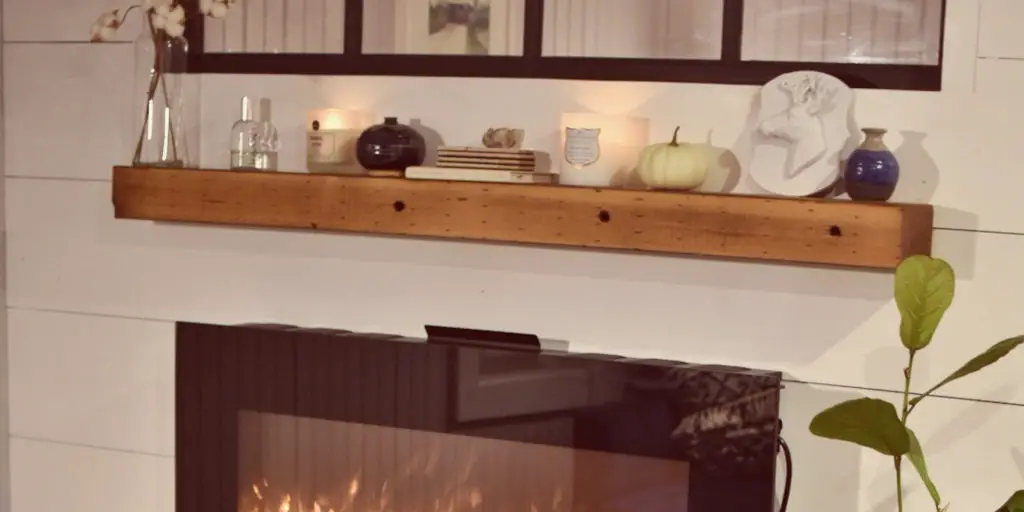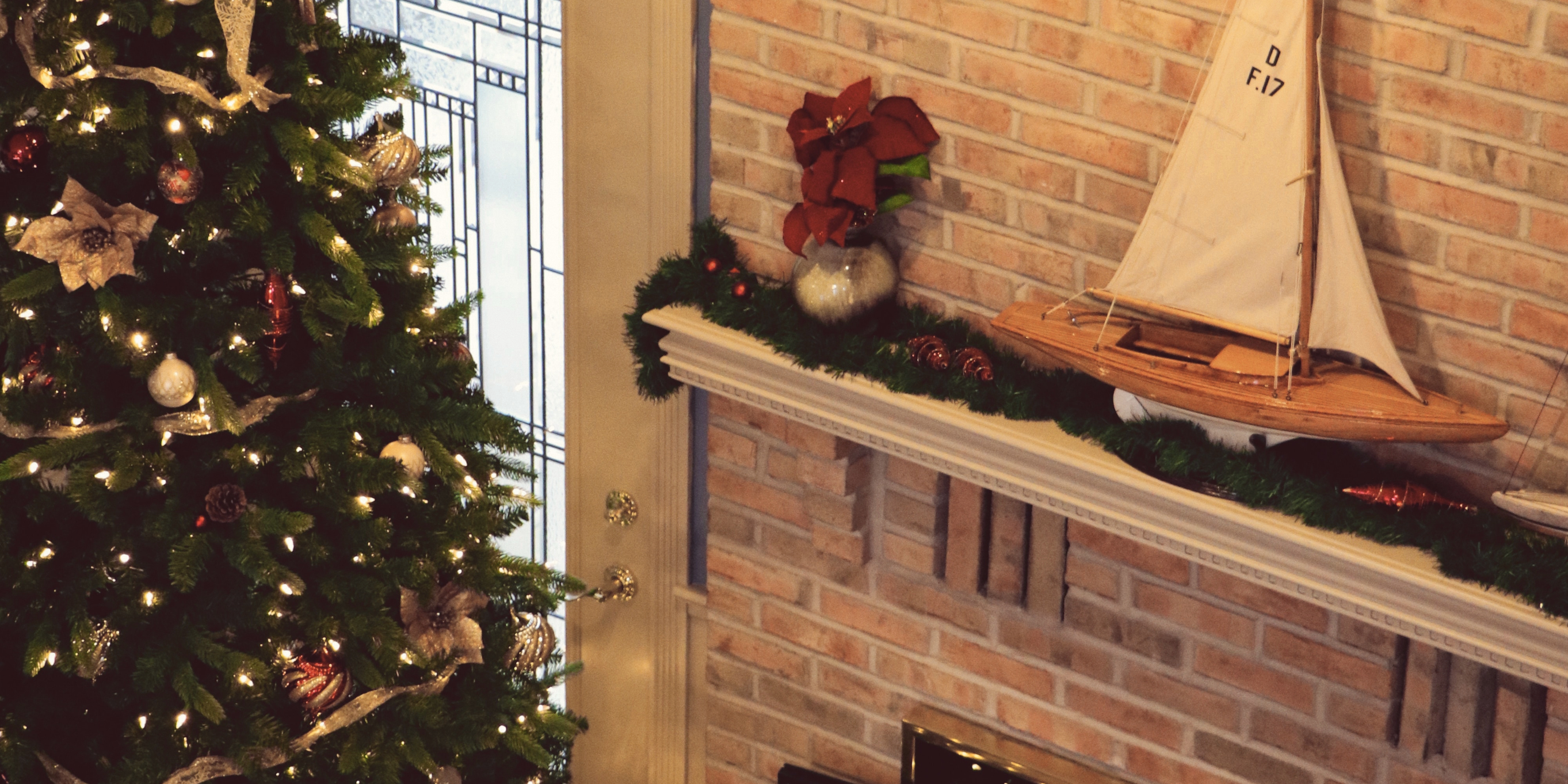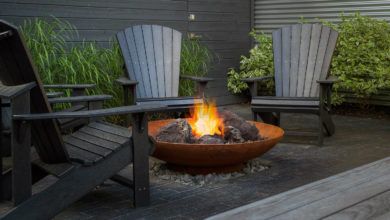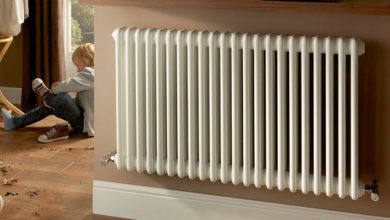Installing a fireplace mantel isn’t very complicated in principle which is why a lot of people want to try and do it themselves. However, there are an awful lot of safety considerations and guidelines that need to be adhered to in order to avoid accidents. At the end of the day, a wooden mantel placed over an open flame is an understandably risky thing. So, in this article, we’ve prepared several tips to install a mantel over a fireplace in the safest way possible.
There are lots of things to consider here – how thick should a fireplace mantel be, what’s the average height for a fireplace mantel, how exactly to hang it, and more. That’s why there are several different methods for how exactly to install the mantel, depending on these factors and on what the fireplace is made out of.
Before you do anything, however, you need to know the fireplace mantel height for your fireplace. Complying with the Clearance to Combustibles guidelines from the National Fire Protection Association (NFPA) is a must but you’ll also do well to consult with your local laws and manufacturer’s recommendations to determine the exact safe height for your particular fireplace and mantel.
So, once you know the height of your mantel, here our suggested methods for installing a mantel:
Slide over bolts
This is the most common method for how to hang a fireplace mantel on an already present stonework. It’s easy, safe, sturdy to do, and the results are quite effective. Here’s what you need to do:
- Locate the studs behind stone, brick or faux veneer of your fireplace.
- Drive a half-an-inch lag screw through each of the studs. You want the support rods to go all the way through the backing studs and at least two-thirds of the way through mantel itself.
- Cut the heads of the screws off with a hack saw, angle grinder, or another cutting tool.
- Get someone to support the mantel in place while you mark the locations of the support rods on the back of the mantel. Then, drill holes in said places and test whether the mantel fits.
- Put some construction adhesive inside the drilled holes and/or some industrial glue on the back of the mantel and on the wall. To do only the latter you’d need the surface to very good for gluing so we suggest you do both.
- Just slide the mantel into place.
 Anchored in masonry
Anchored in masonry
For thicker masonry (over 4 inches) and/or if you can’t locate the supporting studs, you can use the masonry work for your mantel. The main difference between this method and the one above is that here you’ll need to drill holes in the brickwork itself. You can do that with a hammer drill or you can use a lead masonry anchor.
Once you’ve drilled the holes, remember to tap in a lead expansion anchor and then place the bolts or rods themselves.
After that, just follow the steps from the method above – drive the lag screws inside, cut their heads, mark the appropriate locations for the screws on the back of the mantel, add adhesive/glue to it, and stick it into place.
Backer board
If you want to know how to hang a floating mantel, you might want to start working on the mantel before the masonry of the fireplace is finished. This will allow you to move and work behind the fireplace installation and do things not only more easily but also strong enough to support a floating mantel.
Here’s what you can do:
- Cut a “backer board”. It needs to be as thick as the mantel is high, as deep as the masonry’s surface is thick, and as long as the mantel is wide.
- Use 2 lag bolts per stud and as many studs as possible on the front face of the fireplace. You’ll also want to drill a countersink hole which will allow the bold head to be flush with the backer board’s surface. The lags should be about 5 or 6 inches long.
- Clamp the mantel to the backer board for a little bit and drill the screw holes in the corresponding places. Screw lag bolts through the mantel and the backer board. You should use as many bolts between the backer board and the mantel as you did between the backer boards and the studs. As with the other methods above, the bolts should go two thirds into the mantel and throughout the whole backer board.
- With the mantel installed on the backer board, just complete the fireplace around them.
 Stud supported corbel
Stud supported corbel
How to install a mantel on a brick fireplace that you’re not 100% secure with? By using the corbels for a stronger mounting structure and by doing this before the fireplace and masonry are completed. The corbels you see on most mantels are actually decorative but they can be used to support the installation. Here’s how:
- Calculate the right width for the corbels – they should be as wide as the studs + the masonry width + the mantel’s depth + 1-2 inches extra.
- Cut out a tight notch off of the corbel on which you’ll place the stud.
- Run bolts through both the corbel and the stud and fasten them to each other.
- Complete the fireplace and masonry installation around the corbels.
- Add adhesive on top of the corbels and position the mantel on top of them.
Whichever method you choose to go with, safety should always be your main concern. This means making sure that the mantel is set at the appropriate height as well as that it’s secured well enough in place. Increase the stud count for a heavier or a floating mantel but don’t go overboard with them if they are not needed. After you’re done, simply clean your mantel, decorate it however you want, and enjoy!

 Anchored in masonry
Anchored in masonry Stud supported corbel
Stud supported corbel



